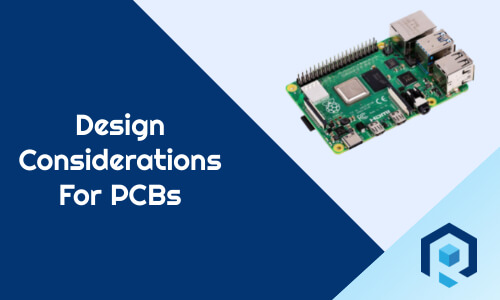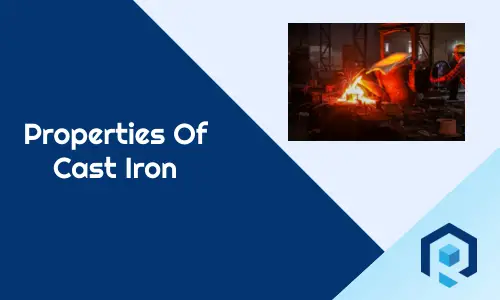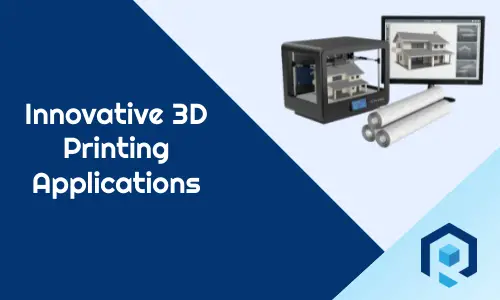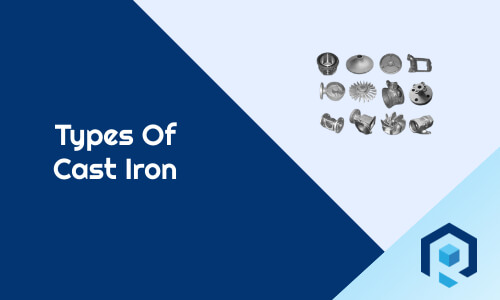Frankly speaking, we crossed the phase of a manually controlled machine. Do you feel that manually controlled traditional machines can cope with the latest demands and supply chain? No, not at all.
The industry is moving fast to adopt CNC machines. So it is wise to explore what is a CNC machine, what are the types of CNC machines, different parts, and specifications.
CNC is a generic term. Any machine which is controlled by a computer can be called a CNC machine. It is not restricted to any particular machine. At the end of this article, you will be getting a CNC machine PDF link to download this article for your future reference
You may see the following abbreviations in this article as you go forward.
- CNC- Computer Numeric Control
- NC-Numeric Control
- CAD- Computer Aided Design
- CAM- Computer Aided Manufacturing
- CAE- Computer Aided Engineering
What is a CNC machine
CNC ( Computer Numeric Control ) machine is a kind of machine which is controlled by a computer. For each and every operation you need to write a program and feed into it. Based on that program the machine will perform its job.
Like how we have different languages to write a software program, all CNC machine also has different logic and codes which can be read by both the machine and the computer. The programmer has to use those machines’ readable codes in the program so that the machine can understand that.
![CNC Machine: Types Of CNC Machine, Parts, Application And Specifications [PDF] 1 types of cnc machine](https://www.riansclub.com/wp-content/uploads/2020/05/types-of-cnc-machine.jpg)
How CNC Machine Works: CNC Machine Working Principle
To understand how a CNC machine works, we need to know the three major subsystems that a CNC machine has. Those three major subsystems are the Command system, Drive/ motion system, and Feedback system. Below are the basic steps a CNC machine follows.
- Creating CAD models and export them to any neutral format
- Importing the CAD model and create tooling in CAM
- Create tooling program following standard CNC codes
- Export the code and feed it into the CNC control system
- CNC controllers read the data and prepare the machine
- The machine instructs the drive system to follows the path set by the program for tool movement
- Coolant, lubricants are injected as and when required as per the program
- Parts get manufactured and taken off from the machine
Creating 3D CAD models
The raw data for a CNC machine is the 3D CAD model. Nowadays any design starts with creating 3D CAD models. Many software like Creo, SolidWorks, Catia are well known for creating 3D models. 3D CAD models are the virtual mock-up of a part of a product
Creating CNC program in CAM
Once a CAD model is created, the data is sent to CAM software, CAM software reads the data, modifies the CAD data as per manufacturing guidelines, and creates programs for the CNC controllers.
That program directs a controller about what tool needs to be used, how the tool should move when the coolant should be applied and many other commands based on that particular part.
There are many codes like G Code, M codes which a CNC controller can read. These are standard codes that CAM software used to create programs. MasterCAM, EdgeCAM, SolidCAM are a few CAM software widely used in industries.
Export CNC program and Import it in the CNC Control System
Once the program is ready which was created by the CAM software, data is fed into the control system of CNC. Since those programs are created using standard CNC codes, machines can easily read those. Once machines read the data, it starts preparing the machine-like selecting the tool, selecting lubricants, etc, and other auxiliary operations.
Instruction to drive system to start and monitor operation
Once the machine is ready, it sends the instruction to the drive system to let the tool move in the direction as set by the program. The Drive system also controls the position and velocity of the tool movement. It also instructs the cooling system to inject coolant.
The feedback systems record all tool movement and operation. If there is a discrepancy, it will rectify the tool movement as per the program and inform the operator on the display unit. All CNC machine has an MCU ( Microcontroller Unit ) that monitor all these tasks.
Eject the part
Once the part is manufactured, machines compare the produced part with the data that was fed into the control system. If there are any differences, that will be popped up on the display screen and the operator can rectify the issue.
Types Of CNC Machine
Below are different types of CNC machines that are widely used in industries.
- CNC lathe machine
- CNC Milling machine
- CNC Plasma cutting machine
- CNC laser cutting machine
- CNC electric discharge machine
- CNC router machine
- CNC 3D Printer
- SPM ( Special purpose machine)
CNC Lathe Machine
We all know why we use Lathe Machines. We place the workpiece and the lathe moves around it to remove materials or create groves. The same principle is applicable to CNC lath Machines also. It also has the lathe at the center but its movement, rotation, and speed are controlled by computer input. Therefore it can produce precise and accurate parts with tight dimensional tolerance.
CNC Milling Machine
CNC milling machine is available in 3-axis or 6-axis configuration. The workpiece is placed into the machine and the tool moves to create a groove or cut in the workpiece. The movement and position of the tool are controlled by a computer in which you need to feed the program.
CNC Plasma Cutting machine
Like a CNC milling machine, CNC plasma cutting machine is also used to cut materials or create grooves. Instead of using a metal tool to cut the workpiece, it uses a plasma arc to cut through metals. Plasma arc can reach a temperature of up to 50K Fahrenheit. Plasma arc cutting machine can produce better parts compared to CNC milling machine
CNC laser cutting machine
CNC laser cutting uses CO2, neodymium (Nd) or yttrium-aluminum-garnet (Nd: YAG) lasers to cut through metals. Although operation wise it is similar to a CNC plasma cutting machine, the laser is not as strong as plasma. However, laser cutting machines offer high accuracy. CNC laser cutting is a very essential machine in industries nowadays.
CNC electric discharge machine
CNC electric discharge machine uses an electric spark to melt metals and reshape them. It can only melt certain areas of metals where it is exposed. That’s why CNC electric discharge machine is used to precisely manipulate a section of a workpiece by melting and reshaping it. The amount of electric spark and the spark movement are controlled by a computer.
CNC Router machine
CNC router machine does similar jobs like CNC milling or CNC lathe but the only difference is that they can create shapes in wood instead of metals. You can create door carvings, different shapes of wood panels, etc using this machine.
3D Printing Machine
The 3D printing machine is a Rapid Prototyping technique that creates an exact physical replica of a 3D CAD model. It uses multiple layers of materials joined together. A tool moves around to create those layers of material. The tool’s movement, position, and speed are controlled by a computer. I have a dedicated article on Rapid Prototyping. The link is given below for your reference.
Special Purpose Machine
Many industries build their own set of machines depending on their process and manufacturing. The reason is, no traditional machine suits their requirements. Mostly all SPM’s are CNC machines as they are controlled by a computer. They follow the same logic as a typical CNC machine
Key elements of a CNC machine
Below are the key elements of a CNC machine
- Program
- Input system
- Display
- Servo motors
- Machine tools
- Lubricant / Cooling system
Program
Program is the raw data for a CNC machine about what tool to use, how to move, at what speed it needs to move etc. It instructs the CNC machines on each and every operation that they need to perform.
Input System
Data from CAD software gets exported and then imported into the machine usually through a flash drive or direct network connection. Sometimes those data is fed into a separate computer which then signals the CNC. But in most cases, a CNC machine comes with an inbuilt computer where you can feed data.
Display
Displays are integrated or you need to connect a separate monitor. But in both cases display shows each and every operation of a CNC. It also shows if something is going wrong with the machine. The display system is the way an operator can interact visually with a CNC machine
Servo Motors
Servo motors are the main components of a CNC machine. They are the actual worker which moves the tool, positions the workpiece, transfer the parts, etc.
Machine tool
Machine tool does all those jobs that you want to see in the finished workpiece like removing materials, tempering materials, etc. The job of machine tools is similar to any traditional machine.
Lubricant System
The lubricant system helps to keep the system parts moving as without lubricant there will be excessive friction and the machine will break down.
Cooling system
All CNC machine has temperature sensors that sense high temperatures and automatically inject coolant. Unlike traditional machines where you need to apply coolant manually, the CNC machine is smart to apply coolant based on temperature.
Parts of CNC machine
Every CNC machine is different and will have a different set of parts. We will take the example of a CNC lathe and will explain what are the key parts are there in that machine.
- Headstock
- Bed
- Chuck
- Tailstock
- Tailstock quill
- Footswitch
- Tool turret
- Control panel
Headstock
The headstock has the main motor of the unit which drives the main spindle. The chuck is mounted on the main spindle
Bed
The platform on which the tool turret travel is the machine bed
Chuck
Chuck is the key component that holds the workpiece. Chuck has jaws that you can tighten or loosen to grip the workpiece
Tailstock
Tailstock provides the extra gripping for machining of long components. Although the chuck holds the workpiece in long components the machine needs extra support to keep it straight.
Tailstock quill
Like headstock, a tailstock is a unit that moves back and forth as per the workpiece length. But tailstock quill is the actual component that grips the workpiece. Tailstock quill is housed into the tailstock
Foot Switch
The footswitch is used to adjust the chuck and tailstock. Through the footswitch, the operator opens or closes the chuck to grip the component. Similarly, it actuates the forward or backward motion of the tailstock quill
Tool Turret
Tool turret holds the tool that is required to perform the job. Depending on the tools the turrets are also different.
Control Panel
This is the only window through which you can start the machine, stop the machine, load the program, run the tool, inject coolant, and all other required jobs of a CNC machine. This is the eye of the CNC machine through which you can see what’s going on in that machine.
Specification of CNC machine
As you know that every machine is different. So specifications of every machine will also be different. Right? But for example, I will show the specification of a CNC lathe machine so that you get a brief idea of a CNC machine
Specification of CNC machine can be categorized as follows
- Capacity
- Spindle
- Axes
- Tooling
- Tailstock
- Coolant system
- Lubricant system
- Hydraulic system
- CAD compatibility
Capacity
- Distance between center
- Swing over bed
- Swing over carriage
- Maximum turning diameter
- Maximum turning length
Spindle
- Spindle size
- Spindle speed
- Spindle power
- Bar capacity
- Bore through spindle
- Chuck size
Axes
- X-axis stroke
- X-axis rapid
- X-axis guideways
- Z-axis stroke
- Z-axis rapid
- Z-axis guideways
Tooling
- Number of stations
- Turret type
- Turning tool size
Tailstock
- Tailstock quill diameter
- Tailstock quill taper
- Tailstock travel range
Coolant
- Types of coolant
- Coolant tank capacity
Lubricant
- Lubricant type
- Lubricant tank capacity
Hydraulic
- Hydraulic pump capacity
CAD compatibility
- Easy interface for CAD data transfer
- CAD file format support
- Feature recognization
- DXF support
Block Diagram of CNC Machine
![CNC Machine: Types Of CNC Machine, Parts, Application And Specifications [PDF] 2 types of CNC machine](https://www.riansclub.com/wp-content/uploads/2020/05/types-of-cnc-machine-1.jpg)
What is a NC machine?
NC machine is the abbreviation of numeric control machine. The term says it all. It is a machine where you have to feed the numeric value of parameters and the machine will do the job for you. Ideally, nowadays all machines are numeric control.
NC machine does not have a display system or control system to run the machine. It does not have a feedback system as well. Typically data is fed manually using an inbuilt input system. NC machines are way too less efficient than a CNC machine
Difference between NC and CNC machines
Below are the basic differences between NC and CNC machines.
| NC Machines | CNC Machines |
|---|---|
| It is numerically Controlled | It is computer controlled |
| It is data-driven | It is software-driven |
| No separate program is required | Program is required for each operation |
| No way to connect a computer | CNC machines are controlled by computer |
| No automated lubrication system | Automatic lubrication systems |
| No way to check tool discrepancy | Tool movement, position, velocity can be traced |
| No feedback system | Inbuilt feedback system |
| The part has loose tolerance | Parts have tight tolerance |
| Accuracy can not be maintained | Higher accuracy is possible |
| High scale production is not possible | High scale production is possible |
| Low maintenance required | High maintenance required |
| Low maintenance cost | High maintenance cost |
| Low tooling cost | High tooling cost |
| Machine price is less | High cost of the machine |
| CAM software not requied | CAM software is required |
| Codes are usually numeric values | G codes, M codes, and other similar codes are used |
| Stores data is a punch card memory | Stores data in the dedicated computer |
What is CNC programming ?
CNC programming is the heart of a CNC machine. It has a set of codes and instructions to instruct the machine about which tools to use, where to move, and many other functions. Machines can decode those codes and follow the instruction a create parts. It’s a language that both machines and computers can understand.
What Is G-Code in CNC Programming?
G-Code is a proprietary standard established by the Electronics Industry Association ( EIA) in 1960. It was introduced so that all CNC machines follow the same standard. The goal of G-Code is to streamline and standardize CNC programming across the globe.
For example, we use C-Programming language to create many CAD software. Similarly, G codes are used for CNC programming. Below are the activities that the G Code does.
- Start the CNC program
- Choose the tool
- Move the tool
- Turn on spindle and coolant
- Start the machining
- Turn off the spindle and coolant
- Keep the produced part in a safe location
- End the CNC program
Common codes used in CNC Programming
| Code | Meaning |
|---|---|
| A, B, C | Rotation about X, Y & Z axis |
| D | Cutter diameter compensation |
| F | Feed Rate |
| G | Proprietary code |
| H | Tool Length offset |
| I, J, K | Arc center X, Y, Z vector ( Drilling Cycle) |
| M | Miscellaneous code |
| N | Block number |
| O | Program number |
| P | Dwell time |
| R | Arc radius |
| S | Spindle speed |
| T | Tool number |
| X, Y, Z | X, Y & Z coordinate |
Advantages of a CNC machine
- Complex parts can be produced at a very short cycle time
- More precise and accurate parts are possible.
- The lead time for product development gets reduced.
- Any error in the part can easily be rectified.
- Easy troubleshooting is possible as every error gets displayed.
- Radar-based safety warning safeguards workers from any accidents.
- The part cost gets reduced due to cycle time reduction
- Less chance of error or defects in the part
- Maintenance and change of tools are easy
- The machine can run without a worker. So it can run 24 hours a day.
- CNC machine increases output and productivity
Disadvantages of CNC machine
- High initial setup cost
- Expensive tooling
- Maintenance is highly expensive
- Computer knowledge is required for the operator
- The license cost of CAD and CAM software is high
- Dedicated programmer required for CNC programming
- The high lead time of repair for machine breakdown.
Conclusion
No doubt, CNC machines are the future. I personally did not see any industry which does not use CNC machines. The reason is very simple, CNC machines increase productivity and that’s the market demand now. If you want to stay in business you have to be fast and efficient and CNC machines help to speed up production
I hope I could able to give you a clear picture of a CNC machine. Every CNC machines are different and use different technologies. Covering details of every CNC machine is out of the scope of this article. But I believe you may have a lot of questions regarding CNC machines. If yes, please do write in the comment section and I will be happy to assist.
Frequently Asked Questions ( FAQ)
What is the full form of CNC?
The full form of CNC is Computer Numeric Control
What is a CNC machine?
CNC machine is a computer-controlled machine where you need to fee computer program to run and control the machine
What are the different types of CNC machines?
CNC lathe machine
CNC milling machine
CNC laser cutting machine
CNC plasma cutting machine
CNC electric discharge machine
CNC Router machine
3D Printers
Special Purpose machines
What is the subsystem of a typical CNC machine?
Input System
Control system
Drive system
Feedback system
What are the key elements of a CNC machine
Program
Input mechanism
Display system
Servo system
Machine tools
Lubricants
What’s the difference between CNC machines and NC machines?
NC machines use an inbuilt micro-controller to take input and run the machine. In the case of CNC machine, it has a separate set of a microprocessor-based computer system that runs and control the machine



